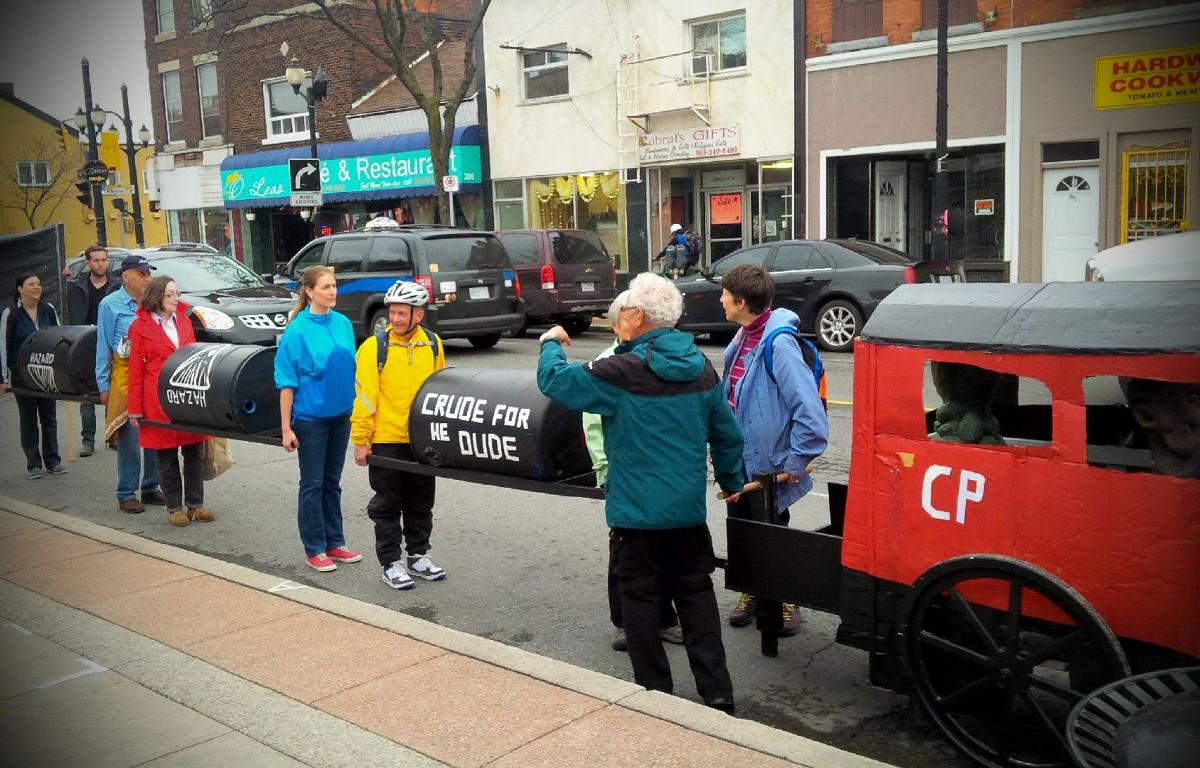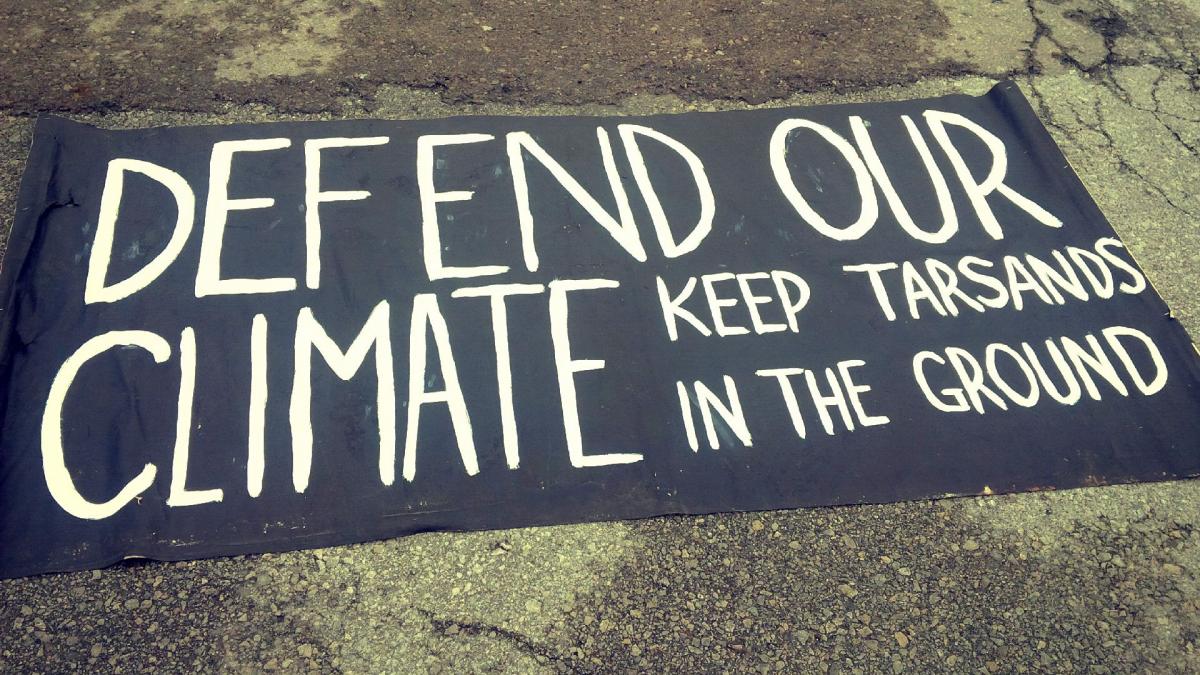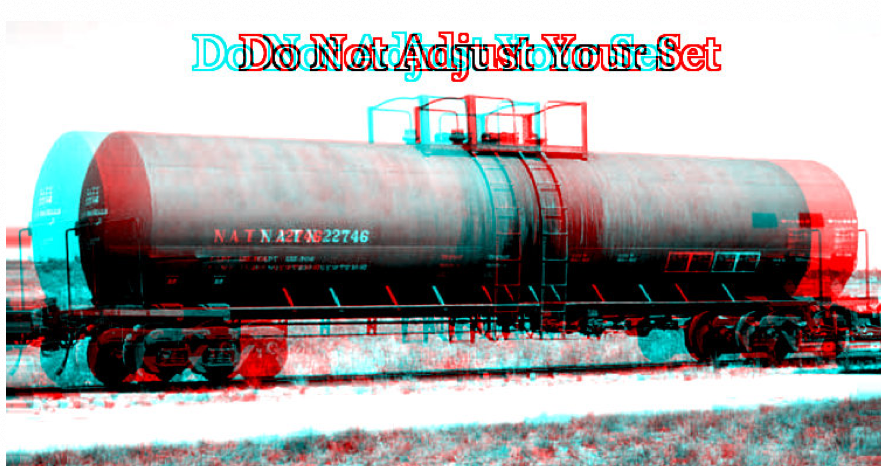Recently, I joined activists from the Council of Canadians and allied groups marched with a mock train up James Street in downtown Hamilton demanding an end to explosive oil rail tankers being transported through their community. DOT-111 tankers pass through Hamilton daily, putting the city and environment at risk. One question that came up again and again when I was speaking with the group is: why is it so difficult to find any substantial and useful information for our communities?
This highlights a major issue that we face across Canada, why is it so difficult to find the information needed for communities and politicians to make informed decisions about their safety? Anyone attempting to get solid and clear information on oil or other hazardous materials traveling by rail through their backyards finds themselves in a task best suited for Sisyphus.

As I have mentioned before, municipalities, first responders, and communities are left in the dark regarding what rail freight is moving through their communities. While we are able to read what is inside a bottle of ketchup, we are not able to find out what hazardous chemicals and explosive oil is moving past us daily. Rail companies rely on our false sense of security and assumption it is just the same old freight moving through our towns. This is despite the fact we are seeing longer, heavier trains traveling longer distances on aging infrastructure.
I recently read a consultant report that stated, “Canada’s rail infrastructure, was never made to handle this kind of weight and the kind of length of trains we’ve got, trains that are up to two miles long…And our rail lines are laid along river valleys, beside stream beds and lake shorelines, the worst possible place for a potential spill.” In general, the length of train trips (length of haul) is increasing for transcontinental railway companies, and there is also a general trend in the rail industry to create longer trains (the average number of rail cars per freight train increasing from 74 in 2003 to 90 in 2012).
A statistical analysis of mainline freight derailments reported to the Federal Railroad Administration in the United States, has also found a strong linear relationship between derailment speed and the average number of cars derailed. The greater the speed of a derailing train, the greater the number of derailed railcars. This same study analyzed hazardous materials release probability and found a similar relationship; the greater the speed of a derailing train, the greater the average proportion of derailed cars that release hazardous materials (that is, longer trains create more kinetic energy to be dispersed). At the same time we are seeing trains that are only, “carrying crude only, rather than interspersing cars with less hazardous cargo. That increases the efficiency of moving oil for the rail companies, and reduces their costs. But it increases the risk of a domino of explosions in the event of a derailment.”
Consider that in 2009 there were 500 tanker loads of crude/fuel oil, in 2013 there was around 160,000. Further, analysts estimate up to around 1.1 million bpd of rail loading capacity could be running in Western Canada by year-end, if terminals are built according to schedule and investment brokers say crude oil carloads originating in Canada could triple by 2015.
After the Lac-Mégantic disaster there was a half-hearted effort to quell concerns and share some information with municipalities from the Harper government. Not surprisingly, there were some strings attached. The information is provided in just a yearly aggregate from for the previous year that is presented quarterly. Instead of real time data for first responders and for communities to make informed decision, the data the rail companies give is about as useful handing someone a fire extinguisher a year after their house burnt down. Even Transport Canada does not have real time data on the exact number of trains and what’s on them at any given period.
Further, this old data is only given to municipalities after they have formally agreed not to share this information with anyone else for spurious security reasons. If shared with the media or public, rail companies have threatened municipalities saying they will cease providing the hazardous goods lists; not surprisingly Lisa Raitt and Harper seem to be fine with the rail industry playing the terrorist card to hide their data for other reasons. Strangely, if you want to find out marine transportation data you are just one click awayfrom real time information.

The reason for this is twofold. As the Chair of the FCM’s railway safety working group said, “Whenever there’s any discussion with [railways] about sharing information, they seemed concerned about it getting into the hands of their competitors and undermining their position.”
The second is that these confidentiality agreements and old data numbers are a way for railways to reduce public scrutiny of their operations. As the Mayor of White Rock, British Columbia stated,
“This goes back many years. The railroad is king, right? That psyche has carried forward to modern day. They’re not responsive to the public. They really don’t care. They have a right to use their tracks and by God they’re going to use them. It’s the dollar Almighty that’s the bottom line….What it really comes down to is they really don’t want people to know because they don’t want people to get upset. And if people are upset it will cause them some difficulties and they just don’t want to be bothered with the hassle.”
While rail companies like to emphasize their safety record, the massive increase in crude being shipped means in the case of an accident there is now a substantially higher probability that oil (be it bakkan, dilbit or otherwise) will be released. In 2012, 4.3 million metric tonnes of crude, bakkan and dilbit oil were transported in, up from 375,000 the year before. What is know is that between January 1, 2006 and June 30, 2013, almost one third of all dangerous goods accidents on rail or road involved a crude oil — much more than any other substance. The largest spill of crude oil from a train (between January 1, 2006 and June 30, 2013) was 90,000 litres on May 21, 2013. But, even this data is unreliable as Transport Canada only requires companies to report spills of 200 litres or more.

It’s also worth mentioning that Transport Canada and Statistics Canada keep track of the amount of crude transported by truck and rail in kilograms, while pipeline amounts are tracked in cubic metres or other liquid measurements. To make an oil spill comparison you have to change cubic meters to litres, and divide by 1000 to find out how many kilograms are in a cubic meter. But, it is much more difficult if you want to compare the type of oil being spilled as they have different effects on the ecosytem. The limited information given does not factor in the API/Density degrees (high density oils have low API gravity).
Heavy crude is considered less than 20 degrees, while Bakkan oil is generally 36-44 degrees, which is similar West Texas Intermediate sweet crude that is 40 degrees and easiest for refineries to process. Now, tarsands bitimum is extra heavy oil and less than 10 degrees. Further, you have to factor into any conversion/comparisons for oil spills that in pipelines diluents containing 33 per cent condensate (the NEB’s percentage assumption) are added to reduce viscosity and give the oil a 21.5 degrees. This does vary though, as the blend ratio may consist of 25-55 per cent diluent by volume, depending on characteristics of the bitumen and infrastructure/operator needs (still it takes 100-130 per cent more energy to pump than light oil).
Trains, on the other hand, are able to carry undiluted bitumen in cars that can be heated to make the bitumen flow, so this needs to be remembered in conversions. But not all transloading terminals and destination refineries have facilities to do this, so bitumen can also be transported by rail in a form known as “railbit” using 15-20 per cent diluent which again you would have to factor in as there is no uniform data reported (at another point I will discuss train backhaul of chemical diluent, and diluent recovery units for pipelines). Are we having fun yet? Even what should be a simple comparison is hindered by data limitations and is extremely labour intensive to find out. Whether discrepancy in unit measurements is designed specifically to obfuscate the issue and spills is a matter of debate, but converted data should be readily available.
A recent report found that data around rail incidents in Canada is
“worryingly inaccessible, sometimes conflicting and in certain cases not available at all… The inability to publicly monitor airline safety statistics would be considered unacceptable…Yet trains transporting volatile goods across Canada arguably exposes entire communities, as in Lac-Mégantic, to potentially catastrophic dangers.”
Even statistics as basic as the number of train trips throughout the country are not publicly reported by The Transportation Safety Board, Transport Canada and Statistics Canada. If you wanted to know the probability of a given train experiencing an accident, it would be impossible to determine using the currently available data. If you are able to obtain accident information from the government, the locations they are only provided to the nearest track milepost, which makes them difficult to understand, and it doesn’t tell you the train’s origin or destination. Further, statistics from the Transportation Safety Board, Transport Canada and Statistics Canada doesn’t distinguish between incidents involving passenger trains and those involving freight trains. And the total number of accidents in some years is reported differently by these various monitoring organizations. The situation is as opaque as the oil the trains are carrying.
This absurdity aside, one major issue missing from any serious discussion in the national emergency preparedness dialog is the dismal safety regulations regarding crude by rail. The Transportation Safety Board’s database of dangerous goods derailments and incidents reported by companies shows 3774 mishaps across the country between 2000 and 2012. The TSB of Canada 2013 transportation safety statistics reported 1,067 rail accidents. Reported rail accidents (derailments and collisions) involving dangerous goods also increased from 119 in 2012 to 144 in 2013, an increase of 21 per cent. Of those accidents, seven resulted in the spilling or release of dangerous goods, up 250 per cent from 2012 and 133 per cent higher than the five-year average. Of the 218 railway incidents reported in 2013, dangerous goods spilled or leaked 94 times, 24 per cent higher than the five-year average of 76.
This is a trend we will only see increasing, but that’s not all, this number is probably significantly under represented. While it is not clear whether the TSB is either incapable due to staffing cuts or unwilling to keep a watchful eye on “industry self regulation,” a recent CBC investigation found that Canadian National Railway did not report 1,843 derailments and other accidents to the TSB over a six-year period.
There is also triple the rate of uncontrolled runaway trains as reported by the Transportation Safety Board (TSB) of Canada. TSB annual reports from 2000 to 2012 listed only 158 runaways (technically referred to as “runaway rolling stock”), whereas CBC investigations discovered over 300 additional cases of runaways during the same period. According to the TSB, “If a runaway causes derailment or collision, it will be reported as this higher consequence occurrence” with no reference in public
reports to the runaway situation. So for example, the Lac-Mégantic tragedy, when 74 crude oil laden cars ran unmanned down the tracks into the community of 6,000, wouldn’t be counted among the publicly reported runaways based on the TSB definitions. It has been noted that,
“Close to 25 per cent of the 459 runaway cases in the past 12 years involved dangerous goods. Ontario leads the country with 124 runaway cases from 2000 to 2012, Alberta is second with 101, and British Columbia and Quebec are tied for third with 73 cases each. Only nine of the 459 runaway-related accidents have been fully investigated by the TSB.”
There is also a documented history of anti-whisleblower actions by the rail industry on their side.

This is not just a Prairies or Eastern Canada issue, it is coast to coast. While accurate and clear data is difficult to obtain, which I think is apparent by this point, the Vancouver Sun recently reported that train derailments in British Columbia increased 21 per cent to 110 incidents in 2013, the highest in five years. One can only imagine the devastation if a CBR unit train traveling through the switchbacks Fraser Valley derailed and spilled into the Fraser River.
As an recent pro-tar sands article in the Globe stated,
“And oil by rail to Prince Rupert is a natural. Just six or seven trains a day along a first class right-of-way would carry a Gateway-sized flow to the Pacific. No permits are required for the transit; the line is in place…The environmental beauty of a refinery is that the heavy oil is converted into products such as diesel and gasoline before loading onto tankers. These substances evaporate quickly in the case of a spill.”
There is also the Christy Clark government’s report which states, “If pipelines are not developed, rail will step into the void to deliver bitumen to the West Coast.” Chances are we will see a continued push for both pipeline and CBR through B.C. as companies scramble to get their stranded equity out of the tar sands.
At the same time, it is important to emphasize again this is not a pipeline versus rail debate, there is a false dichotomy presented when claiming pipelines are safer than rail for shipping hydrocarbons. Snake oil salesmen from each industry have been actively lobbying and spreading misleading information which benefits them both. As a Council of Canadians member in Kenora tried to outline to Northwestern Ontario Municipal Association’s (NOMA) president, Mayor Dave Canfield, their endorsement of the Transcanada Energy East Pipeline from a safety perspective is incorrect and embarrassingly over simplified.
As she stated, “The pipeline and railway both cross water, to push the pipeline forward to reduce railway traffic is totally false…NOMA hasn’t done it’s homework. Now there will be two unsafe routes of shipping petroleum products through communities.” This is the point.
In all the obfuscation of data, missing information and political spin from both industries, we are seeing a massive increase in extreme energy being transported by both oil-by-rail and pipelines. This is at a time when we are witnessing the effects of climate change daily: from Antarctic ice shelves collapsing, the acceleration of the melt from the glaciers in B.C (22 billion cubic metres of water annually), all glaciers on Vancouver Island being completely gone in just 25 years, the Athabasca glacier disappearing in a generation, staggering increases in tornadoes, exceptional drought, larger and more costly forest fires in Canada, the U.S. military saying climate refugees will be a national security risk, and so on, and so on.
Now more than ever we need to take a step back from extreme energy and protect our climate. And while Mayor Canfield takes exception to this and thinks this view is “one-sided,” “wrong,” and “ideological,” maybe it is time he does a little homework and read the links below.
For more information on this issue see:
Getting railroaded with DOT-111 Tanker Trains in Toronto
Oil-By-Rail exports to US up 900 Per Cent
Lisa Raitt and Stephen Harper Still Playing Dangerous Petro Politicking With Our Communities
DOT-111 Detecting Disaster Spotters Guide
Could Toronto be the next Lac-Magnetic disaster
Oil cars on fire after train collision in North Dakota
Moving oil by rail to expand despite public concerns
Harper told no regulatory approval needed for moving tar sands oil by rail
All images: Michael Butler



